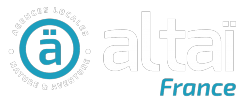The Full Tour du Mont Blanc – Self-Guided in 9 Days
The Tour du Mont Blanc circles the massif and the rooftop of Europe, which towers at 4,810 meters!
Itinerary
-
Day 1 Les Houches - Les Contamines-Montjoie
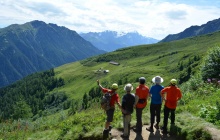 Meet in Les Houches at 8:00 AM at the base of the Bellevue cable car.
Meet in Les Houches at 8:00 AM at the base of the Bellevue cable car.
From the top, enjoy a panoramic view of the Mont Blanc massif, the Aiguilles Rouges, the Fiz range, and the Aravis mountains.
The hike begins along a scenic balcony trail at 1,800 meters and leads you to the foot of the Bionnassay Glacier before descending to Les Contamines-Montjoie.
You may also cross the Col du Tricot at 2,120 meters, weather permitting!Elevation gain: Approx. 665 m
Elevation loss: Approx. 1,300 m
Maximum altitude: 2,120 m
Accommodation: Mountain hut (refuge) -
Day 2 Contamines- Montjoie - Vallée des Glaciers
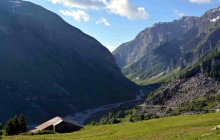 You will leave your accommodation to reach Notre-Dame de la Gorge, a renowned site of baroque romanticism.
You will leave your accommodation to reach Notre-Dame de la Gorge, a renowned site of baroque romanticism.
A long ascent leads you to the Col du Bonhomme (2,329 m). This pass has been crossed for centuries by shepherds and their flocks, armies and soldiers, pilgrims, itinerant traders, and Tour du Mont Blanc hikers.
From here, the view opens up over the Beaufortain region at your feet.
You’ll then head toward the Crête des Gittes, before descending through alpine pastures filled with Tarine and Abondance cows.
The milk from these breeds offers a delicious variety of cheeses, especially Beaufort, which we highly recommend you try during the week.Elevation gain: Approx. 1,550 m
Elevation loss: Approx. 900m
Maximum altitude: 2,665 m
Accommodation: Mountain hut (refuge) -
Day 3 Vallée des Glaciers - Col de La Seigne - Val Veny
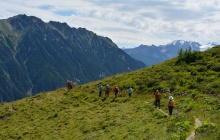 After an included transfer to Ville des Glaciers, today you will cross your first border, from France into Italy, via the Col de la Seigne (2,516 m).
After an included transfer to Ville des Glaciers, today you will cross your first border, from France into Italy, via the Col de la Seigne (2,516 m).
Used since Antiquity, this pass is marked by a large cairn and lies on the watershed between the Mediterranean and Adriatic seas.
The view is simply breathtaking: a stunning array of snow-capped peaks rises on the Italian side of Mont Blanc.
You enter the Val Veny, where the Aosta valleys unfold before your eyes.
Tonight, you'll stay in a mountain hut in this valley, at the foot of the Brenva Glacier, beneath the imposing Aiguille Noire de Peuterey.Elevation gain: Approx. 1,000 m
Elevation loss: Approx. 1,150 m
Maximum altitude: 2,537 m
Accommodation: Mountain hut (refuge) -
Day 4 Val Veny - Val Veny - Courmayeur - Val Ferret
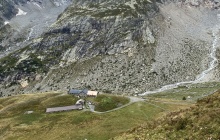 This morning, you descend to Courmayeur, where you can enjoy a little ice cream before continuing your hike up the Italian Val Ferret, beneath the impressive Grandes Jorasses. After La Vachey, you will reach either the Walter Bonatti Refuge (2,025 m) or the Elena Refuge (2,061 m) for your last night on the Italian side. If you stay at the Bonatti Refuge, you won’t have to carry your bag, as vehicles do not go up to the refuge, allowing you to better appreciate nature in its raw state. This passage through Val Ferret will deeply move you with the history of our great mountain guides...
This morning, you descend to Courmayeur, where you can enjoy a little ice cream before continuing your hike up the Italian Val Ferret, beneath the impressive Grandes Jorasses. After La Vachey, you will reach either the Walter Bonatti Refuge (2,025 m) or the Elena Refuge (2,061 m) for your last night on the Italian side. If you stay at the Bonatti Refuge, you won’t have to carry your bag, as vehicles do not go up to the refuge, allowing you to better appreciate nature in its raw state. This passage through Val Ferret will deeply move you with the history of our great mountain guides...
Subject to availability at the refuges at the time of final confirmation. An alternative will be proposed if necessary.
Alternative:
Ascent +900 m / Descent -740 m
Maximum altitude: 2,537 mElevation gain: Approx. 1,415 m
Elevation loss: Approx. 590 m
Maximum altitude: 2,537 m
Accommodation: Mountain hut (refuge) -
Day 5 Val Veny - Val Ferret italien - Grand col Ferret - La Fouly
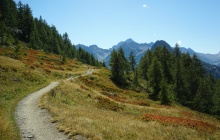 Today, you continue your ascent of the Italian Val Ferret to reach the Grand Col Ferret, which marks the border between Italy and Switzerland. As you walk, admire the Pré de Bar Glacier and Mont Dolent—the summit that borders all three countries. You then descend towards the village of Ferret, where you’ll stop at a guesthouse/inn and enjoy a stunning setting in the heart of Switzerland!
Today, you continue your ascent of the Italian Val Ferret to reach the Grand Col Ferret, which marks the border between Italy and Switzerland. As you walk, admire the Pré de Bar Glacier and Mont Dolent—the summit that borders all three countries. You then descend towards the village of Ferret, where you’ll stop at a guesthouse/inn and enjoy a stunning setting in the heart of Switzerland!
Elevation gain: approximately 900 m
Elevation loss: approximately 740 m
Maximum altitude: 2,537 m
Accommodation: Mountain refuge -
Day 6 La Fouly - Champex
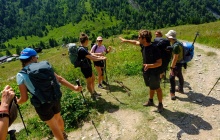 Starting from this charming guesthouse, you will begin the descent along a stream. You will pass several picturesque and stunningly beautiful hamlets. A final effort will be required to reach Champex and its magnificent little lake.
Starting from this charming guesthouse, you will begin the descent along a stream. You will pass several picturesque and stunningly beautiful hamlets. A final effort will be required to reach Champex and its magnificent little lake.
Elevation gain: approximately 790 m
Elevation loss: approximately 750 m
Accommodation: Mountain refuge -
Day 7 Champex - Trient
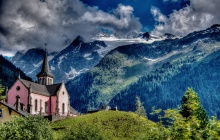 You leave Champex to start the ascent leading you to the Bovine alpine pastures, surrounded by Hérens cows — those beautiful black cattle that are a source of pride for the Valais locals. This balcony trail offers panoramic views over the Rhône valley and the Rhône bend on the Swiss side, as well as the Grand Combin massif to the southeast. The descent follows a lovely forest path down to the Forclaz Pass. Then, along the Bisses path (a Valais term for water channels carved into rock or wood), you reach the village of Trient where you will spend the night.
You leave Champex to start the ascent leading you to the Bovine alpine pastures, surrounded by Hérens cows — those beautiful black cattle that are a source of pride for the Valais locals. This balcony trail offers panoramic views over the Rhône valley and the Rhône bend on the Swiss side, as well as the Grand Combin massif to the southeast. The descent follows a lovely forest path down to the Forclaz Pass. Then, along the Bisses path (a Valais term for water channels carved into rock or wood), you reach the village of Trient where you will spend the night.
Alternative (Fenêtre d'Arpette): Elevation gain +1110m / Elevation loss -1190m. Max altitude: 2201m.Elevation gain: approximately 850 m
Elevation loss: approximately 900 m
Maximum altitude: 2,005 m
Accommodation: Mountain refuge -
Day 8 Trient - Col de Balme - Tré le Champ
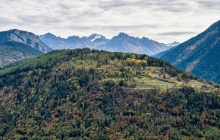 Today, you return to France by crossing the border at the Col de Balme (2191m). You will hike up to the Col des Posettes before following a balcony traverse to Tré-Le-Champ. Finally, you descend to Argentière where you will spend your last night.
Today, you return to France by crossing the border at the Col de Balme (2191m). You will hike up to the Col des Posettes before following a balcony traverse to Tré-Le-Champ. Finally, you descend to Argentière where you will spend your last night.
Elevation gain: approximately 900 m
Elevation loss: approximately 1000 m
Maximum altitude: 2,195 m
Accommodation: Mountain refuge -
Day 9 Argentière - Lac Blanc - Chamonix
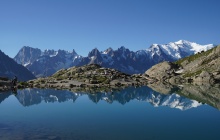 For this last day, you will explore the Aiguilles Rouges massif and nature reserve, which face Mont Blanc. You will climb to the Chéserys Lakes, then to Lac Blanc, where the panoramic view is breathtaking. The descent follows a balcony trail via Flégère and Brévent down to Chamonix (or you can take the cable car down from Flégère). The day ends in Chamonix around 4:30 pm. If you parked your vehicle at Les Houches, bus No. 1 will take you back to the Bellevue cable car station (approximately one bus every 30 minutes).
For this last day, you will explore the Aiguilles Rouges massif and nature reserve, which face Mont Blanc. You will climb to the Chéserys Lakes, then to Lac Blanc, where the panoramic view is breathtaking. The descent follows a balcony trail via Flégère and Brévent down to Chamonix (or you can take the cable car down from Flégère). The day ends in Chamonix around 4:30 pm. If you parked your vehicle at Les Houches, bus No. 1 will take you back to the Bellevue cable car station (approximately one bus every 30 minutes).
Elevation gain: approximately 1,150 m
Elevation loss: approximately 1,450 m (if you choose not to take the cable cars down to the valley)
Maximum altitude: 2,355 m
Period & budget
When to travel?
The best period for travelling is during the following months:
| Jan | Feb | Mar | Apr | May | Jun | Jul | Aug | Sep | Oct | Nov | Dec |
Price
Gîte/Refuge Package
Without luggage transfer assistance:
- Based on 2 to 3 people: €945 per person
- Based on 4 to 5 people: €925 per person
- From 6 people or more: €895 per person
With luggage transfer assistance:
- Based on 2 to 3 people: €1165 per person
- Based on 4 to 5 people: €1125 per person
- From 6 people or more: €1095 per person
The budget is an indication of the price per person, subject to availability. Your local agent will send you a customized quote with the exact price. The price can vary according to availability, level of services, period of travel, number of participants, booking time frame and other items.
Included
Not included
- Luggage transfer if not selected at the time of booking
Notes
- Travel insurance (see details of our insurance options below)
- Additional nights: please contact us
- Option to include a certified mountain guide: please contact us Note: This tour is also available in a 7-day version
Terms and conditions
Booking conditions
Invoice procedure
Cancellation policy
Cancellation by You
If, for any reason, you need to cancel your trip, the amounts you have paid will be refunded, subject to the following deductions:
You must notify us of your decision to cancel in writing, using any method that provides acknowledgment of receipt. The cancellation date will be determined based on the date we receive your written notice.
In case of cancellation, for any reason, the following cancellation fees will apply:
- More than 31 days before departure: 30% of the total trip cost (excluding insurance)
- 30 to 21 days before departure: 40% of the total trip cost (excluding insurance)
- 20 to 14 days before departure: 50% of the total trip cost (excluding insurance)
- 13 to 7 days before departure: 75% of the total trip cost (excluding insurance)
- Less than 7 days before departure: 100% of the total trip cost (excluding insurance)
Special Cases
Regardless of the cancellation or contract modification date, the following fees are added to the above scale:
- Non-refundable fixed ground fees: Any firm bookings made early (such as certain mountain huts) will be charged in case of cancellation.
- Insurance and registration fees: Whatever the insurance policy chosen, the cost of insurance and registration fees are non-refundable.
Cancellation by Us
Altaï France may cancel a trip free of charge in the following cases:
- If the minimum number of participants required to run the trip is not met.
- In case of exceptional and unavoidable circumstances, especially related to mountain conditions and customer safety.
In such cases, Altaï France will propose alternative solutions. If no suitable alternative is available, any unused services will be refunded. No additional compensation can be claimed.
You will be informed of any cancellation as soon as possible, and no later than:
- 30 days before departure for self-guided or exclusive trips
- 20 days before departure for trips longer than 6 days requiring a minimum number of participants
- 7 days before departure for trips lasting 2 to 6 days
- 48 hours before departure for trips shorter than 2 days
If Altaï France is forced to cancel all or part of the trip due to circumstances that compromise customer safety (e.g., poor mountain weather), the unused services will be refunded. No additional compensation will be provided.
For safety reasons and to ensure a consistent group level as described, the guide and organizers reserve the right to terminate your participation if your technical level or physical condition does not meet the requirements. In such a case, no refund or compensation will be provided.
Changes to travel contract
Pricing
Contract transfer
Insurance
Practical info
Staff
- A day-by-day itinerary description
- Vouchers for accommodations
- Map extracts for the hiking days
Food
- Breakfasts and evening meals are provided at the various accommodations.
- Be sure to bring your own snacks based on your preferences before departure: cereal bars, chocolate bars, dried fruits, etc.
- Lunch picnics are not included: throughout the trek, you’ll have opportunities to buy supplies in small grocery stores, cheese shops, or directly in the mountain huts.
Accommodation
Whenever possible, we select accommodations that meet at least one of the following criteria: eco-labeled (Ecogîte, European Ecolabel for tourist accommodation, Green Key, Green Globe, local label, or equivalent), or actively engaged in efforts to reduce their environmental impact.
Transportation
Depending on the chosen version, your luggage may either be transported for you and delivered directly to each accommodation, or you will carry all your belongings in your backpack for the full 9-day trek.
Various transfers such as shuttles, cable cars, and local buses are at your own expense if you choose to use them (indicative rates for summer 2025):
- Day 1: Bus from the Chamonix valley to Bellevue (Line 1 / €2)
- Day 1: Cable car from Les Houches to Bellevue (€18)
- Day 2: Shuttle between Les Contamines-Montjoie and Notre-Dame-de-la-Gorge (available late June to end of August – free)
- Day 4: Swiss rail (CFF) bus between Ferret and Champex (via Orsières)
- Day 9: Cable car descent from Flégère to the valley (€18)
- Day 9: Local bus from Le Tour to Chamonix or Bellevue (€2)
Access:
Please inform us whether you will be arriving by train or car. If traveling by train, kindly provide your arrival schedule.
1) By Train:
Arrive at Saint-Gervais-les-Bains-le Fayet station (served by TER and TGV), then transfer to the scenic TER train (Le Fayet - Vallorcine line) and get off at Les Houches station. From there, it's a 20–25 minute walk to Bellevue. Alternatively, get off at Les Bossons and take bus line 1 to Bellevue (check summer schedules carefully).
For schedules and more information, visit www.voyages-sncf.com or call 3635 (within France).
2) By Car:
Budget & exchange
Vital equipment
For your comfort and safety, the 3-layer clothing system is strongly recommended while hiking:
- A short- or long-sleeved breathable base layer (synthetic hollow-fibre material)
- A fleece jacket (thermal insulation layer)
- A waterproof and breathable windbreaker jacket (e.g. Gore-Tex)
Depending on the weather and your level of physical effort, you can adjust accordingly:
- In calm, warm weather, a light base layer may be enough.
- In rain, snow or wind, add your waterproof jacket.
- In cold conditions or during breaks at higher altitudes, a fleece under your windbreaker becomes essential.
Clothing & Personal Gear Checklist
- A cap or sun hat
- A pair of sunglasses
- A beanie or headband
- T-shirt (quick-drying, technical fabric such as Carline)
- Warm shirt or fleece
- Insulated jacket (fleece or down)
- Waterproof windbreaker jacket (K-Way or Gore-Tex type)
- Full rain cape with sleeves (no snap buttons, made of polyamide)
- Lightweight hiking pants
- Windproof pants (K-Way or Gore-Tex type)
- Shorts or capris
- Hiking socks:
100% wool: warm, moisture-wicking, prevents blisters
Synthetic: durable and moisture-wicking (watch out for overheating if 100% synthetic)
Cotton: not recommended – absorbs moisture but doesn't wick it well
Footwear
Your hiking boots are your best friend! They must be:
- Durable
- Offer good ankle and foot support (high-top)
- Be waterproof
- Have non-slip, lugged soles, preferably Vibram or similar
Additional Equipment
- Long gaiters
- Warm gloves
- Spare underwear and socks
- Extra pair of lightweight pants/shorts
- Light sandals or trainers for the hut
- Toiletry kit (earplugs recommended)
- Towel
- Sleeping bag liner – blankets are provided in huts and gîtes
- Nightwear
Material
- A small flashlight (with spare batteries)
- Telescopic trekking poles (recommended)
- A water bottle with a minimum capacity of 1 litre / plus a thermos (0.75 L) is also great to have hot tea during breaks
- A knife, spoon, and fork
- An individual plastic Tupperware container for your lunch salads
- Sunscreen (for skin and lips) + after-sun lotion
- Toilet paper + lighter (to burn the paper)
- Optional: camera, binoculars, etc.
Helpful equipment
- A medium-sized plastic box with plastic cutlery and cup if you want to prepare some of your own meals.
- Plastic bags to keep your belongings, camera, and clothes waterproof.
- Earplugs, always useful!
- A notepad and pen, a good book, a deck of cards...
- Trekking poles (optional): very helpful to save your knees on descents (up to 30% of your weight plus your backpack’s weight is supported by the poles) and to support your effort on climbs (arms help along with legs).
- A mini pair of binoculars (optional).
- A camera (optional).
- Gaiters (highly recommended, especially early in the season when there may still be snow on some trails).
- An emergency survival blanket.
- A mobile phone.
Luggage
- The second luggage that follows you to the refuges: instructions from the carrier:Maximum weight: 9 kg; avoid suitcases. Any excess weight may be charged to the owner by the carrier.On the morning of your departure, you must leave your luggage on the ground floor of the refuge for collection by the driver.The inside of the bags must be accessible to Swiss customs officers — do not use locks.
It is forbidden to have the following items in these bags:
- Computers, tablets, or other electronic devices
- Cameras
Medicine
- Hydrating sunscreen for body and lips
- Adhesive bandages (Elastoplast) and scissors
- Vitamin C
- Eye drops
- Pain relievers such as paracetamol (Doliprane) and/or aspirin
- Anti-diarrheal medication
- Intestinal antiseptic (e.g., Intetrix)
- Healing and antiseptic ointment
- Common antibiotics (optional)
Also, don’t forget your ongoing prescription medications and your health insurance card.
Passport
Health information & recommendations
Endurance training is essential to fully enjoy this circuit. Three months before departure, plan to do, if possible, 2 to 3 endurance training sessions of at least one hour per week, and a weekend hike of at least 6 hours with an elevation gain of 350m per hour. The best training for a trek is, of course, hiking itself. Knee problems remain the main issue encountered on this type of trek; please consult your doctor before departure. Kindly inform the agency promptly of any relevant medical information: food allergies, diabetes, past or recent cardiac or vascular incidents, asthma, etc.
Hygiene
In the mountains, water often flows abundantly but is not always drinkable! Fill up at drinking water fountains in villages or at private basins (after asking permission beforehand!). Also consider carrying a thermos with hot water for tea breaks during the hike.
Electricity
There will be electricity available in most of the places where you will be staying. If you’re worried about running out of battery, we recommend bringing a portable power bank.
Electrical outlets in France are unique in that they have both male and female parts: they have 2 pins and a receptacle. If you need an adapter, please make sure to get one before your departure. In France, the plugs are type E. The voltage is 230 V, and the standard frequency is 50 Hz.
Electricity in Italy conforms to European standards of 220 V to 230 V, with a frequency of 50 Hz. Wall sockets typically accept plugs with 2 or 3 round pins.
The electrical current in Switzerland is 230 V, 50 Hz. Swiss sockets are recessed, with 3 hexagonal holes and are incompatible with many plugs from other countries. However, they generally accept standard European plugs with 2 pins.
Local time
Sustainable tourism
We do our best to offer trips that respect the principles of sustainable and responsible tourism. Our goal is to allow visitors to discover the many facets of a country by taking you off the beaten path and connecting you with nature and its inhabitants, while ensuring that your visit has no negative impact on the natural environment.
Water is a precious and scarce resource. Our team and travelers are strongly encouraged to use it considerately and avoid excessive consumption whenever possible.
Please try to recycle your waste whenever you can, even though recycling may not be widely practiced everywhere in the world.
Be thoughtful and respectful while hiking. Make sure to wear suitable footwear for your activity, avoid picking flowers, moving stones, or lighting fires.

